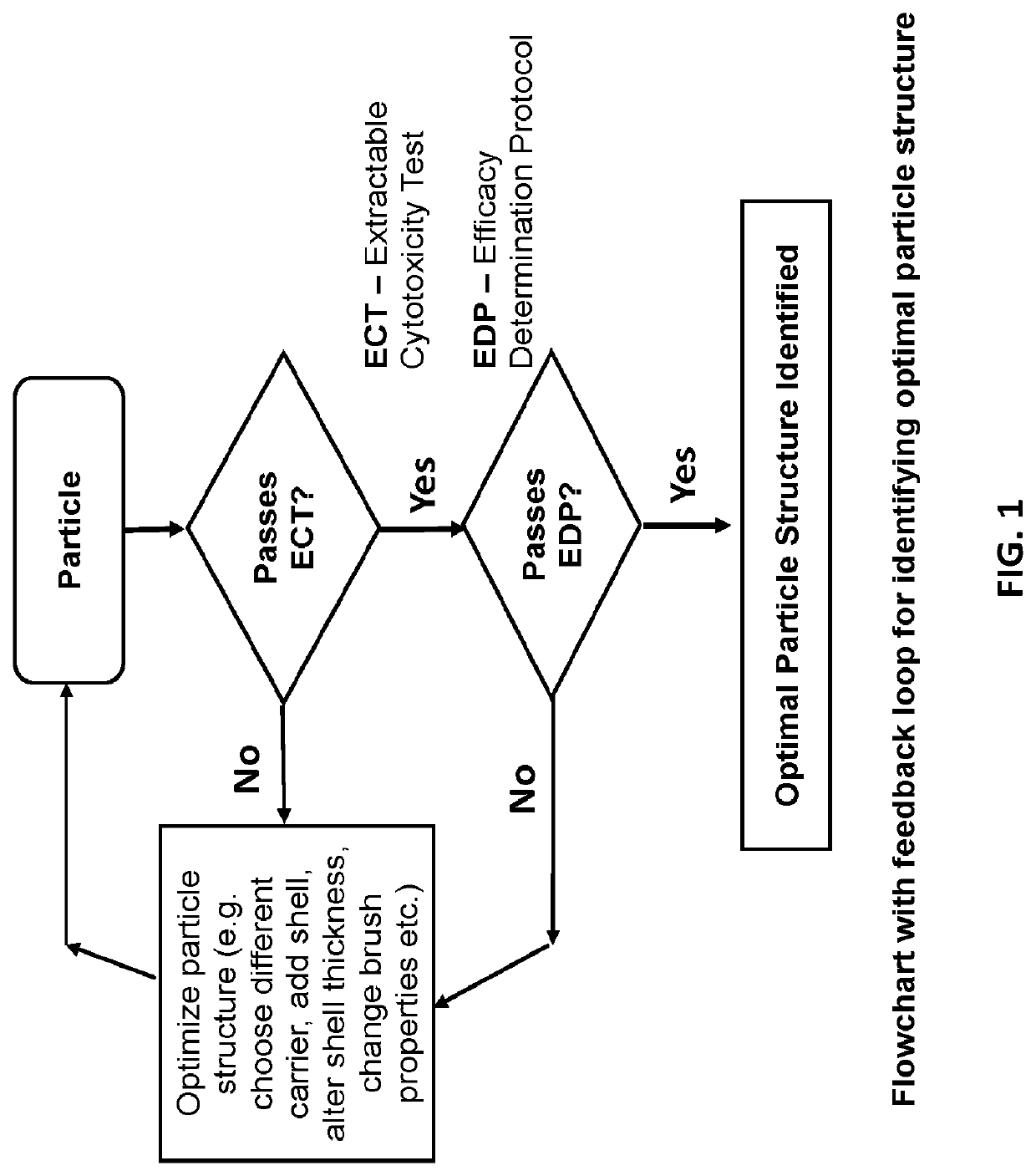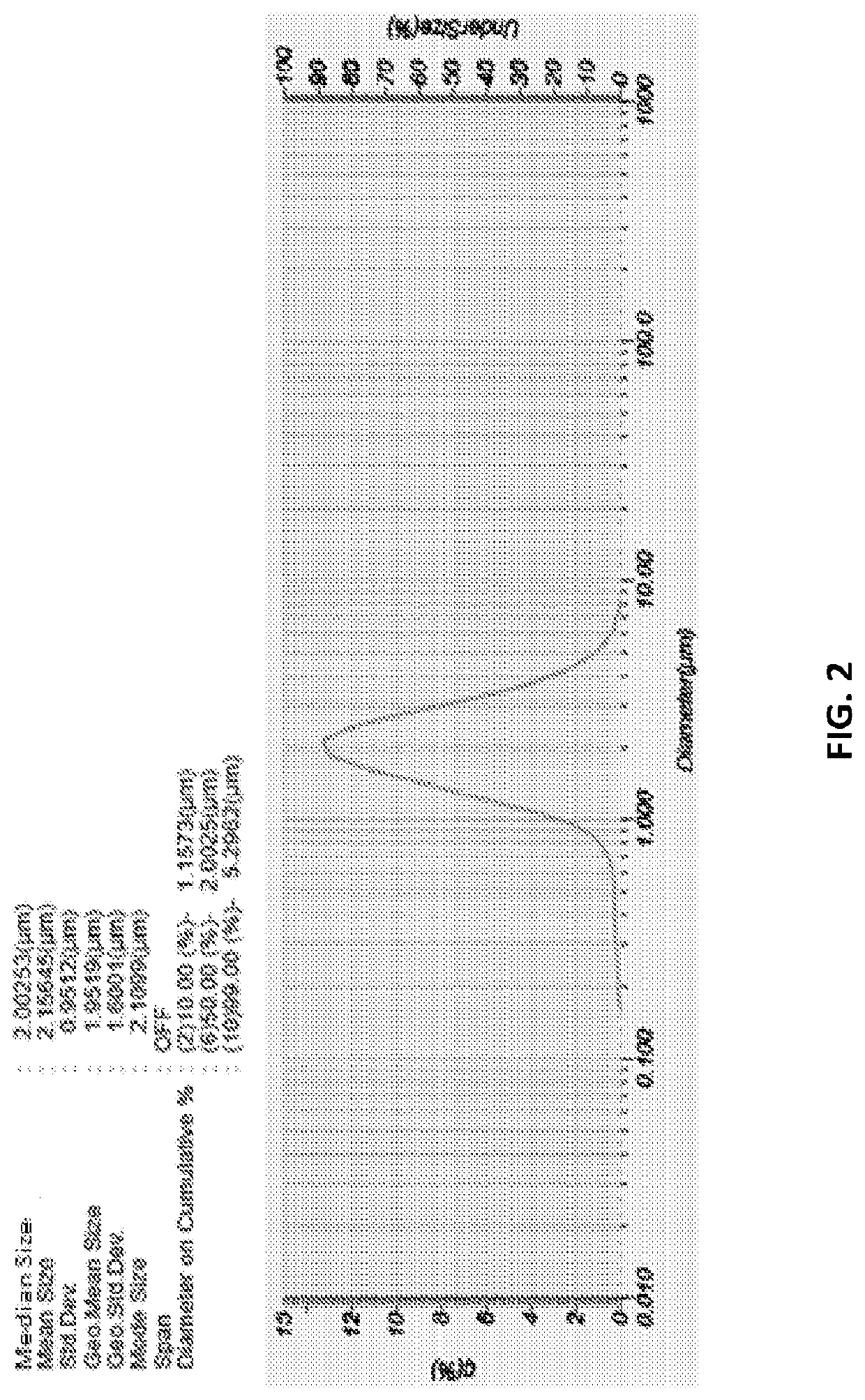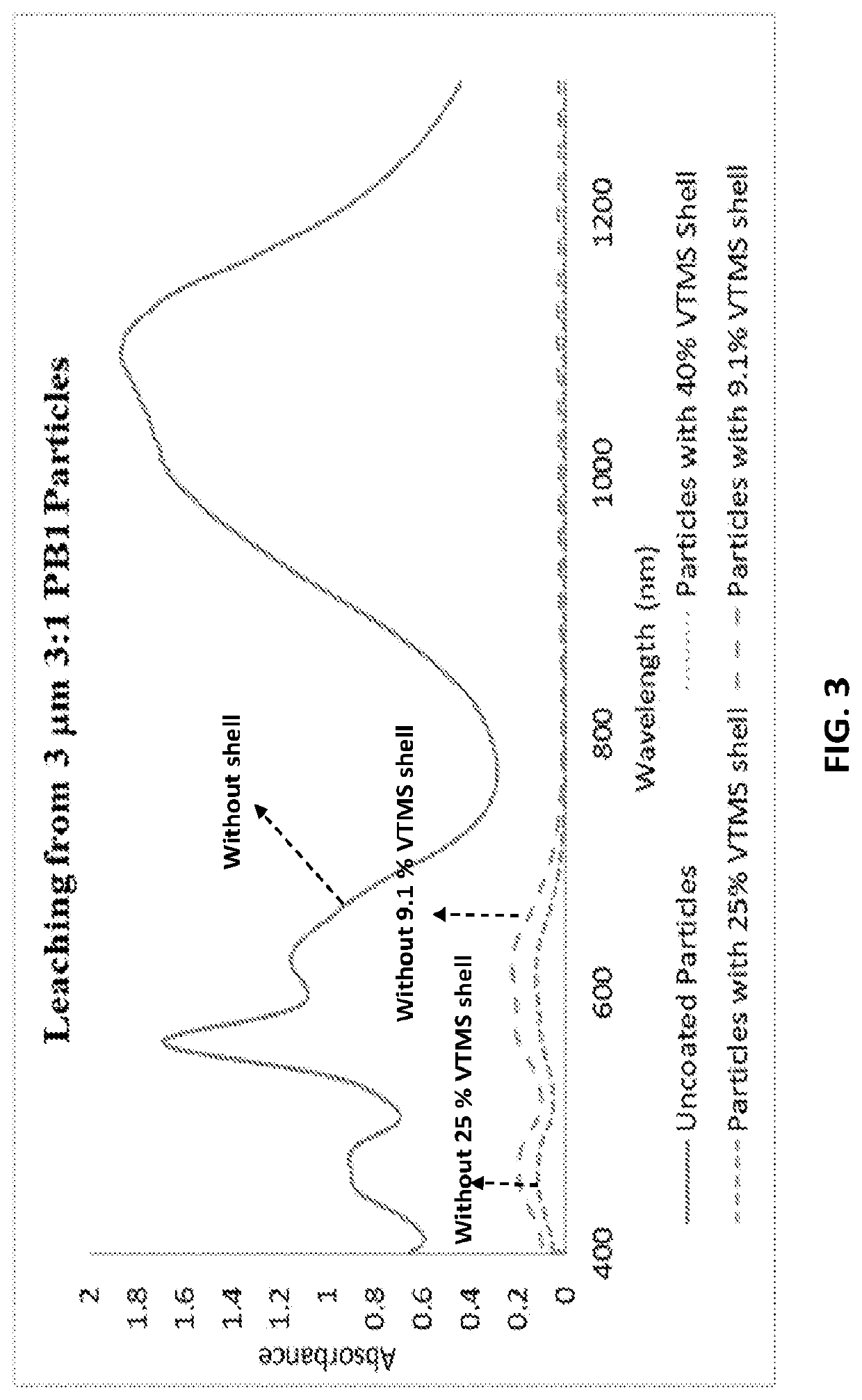Safe particles for the introduction of useful chemical agents in the body with controlled activation
a technology of safe particles and chemical agents, applied in the direction of capsule delivery, microcapsules, make-up, etc., can solve the problems of cytotoxicity to the human body, high toxicity of leaked agents, and potential toxic chemicals and heavy metals
- Summary
- Abstract
- Description
- Claims
- Application Information
AI Technical Summary
Benefits of technology
Problems solved by technology
Method used
Image
Examples
example 1
Particle Fabrication
[0271]Reagents source: Chemical reagents sodium dodecyl sulfate (SDS), polyvinyl alcohol (PVA) were purchased from Aldrich; dyes B141, C161, M071, Y161 were prepared at Bambu Vault LLC; vinyltrimethoxysilane (VTMS) was purchased from Gelest, Inc. Neocryl® B-805 polymer (MMA / BMA copolymer, weight average molecular weight=85,000 Da, glass transition temperature Tg=99° C.) was purchased from DSM. Epolight™ 1117 (tetrakis aminium, absorbing at 800 nm-1071 nm, melting point: 185-188° C., soluble in acetone, methylethylketone and cyclohexanone) was purchased from Epolin Inc. Antioxidant Cyanox® 1790 (1,3,5-tris(4-tert-butyl-3-hydroxy-2,6-dimethyl benzyl)-1,3,5-triazine-2,4,6-(1H,3H,5H)-trione, CAS NUMBER 040601-76-1) was purchased from Cytec Industries Inc.
example 1a
Uncoated Particle Synthesis Through Emulsion Method
[0272]This method results in a primary particle (no shell) wherein both the colorant (e.g., tattoo dyes) and the material (e.g., IR absorbing agent) are in solid state solution thereby ensuring high absorbance.
[0273]Abbreviations: n-BMA: n-butyl methacrylate; MMA: methyl-methacrylate
[0274]Preparation of the aqueous phase: 1.2 g of sodium dodecyl sulfate (SDS) was added into 190 g of 4.9% aqueous polyvinyl alcohol (PVA) solution placed in a round bottom flask. An aqueous solution of SDS containing 4.9% PVA was formed after the dissolution of SDS (the aqueous phase). The aqueous phase was stirred with an IKA t-25 Turrax at 8000 RPM.
[0275]The preparation of the organic phase: to 88 g of dichloromethane was added 8.0 g of DSM Neocryl® B-805 polymer (MMA / BMA copolymer), 1.19 g of B141 dye, 0.36 g of C161 dye, 0.36 g of M071 dye, 0.60 g of Y161 dye, 1.82 g of Epolight™ 1117 dye, and 0.65 g of Cyanox® 1790 to allow the formation of a clear...
example 2
Characterization of Particle Physicochemical Properties
[0285]2a. Particle Size Distribution
[0286]The particle size distribution of the resulting dye / MMA / BMA copolymer particles of Example 1b were measured with Horiba LA-950 Particle Size Analyzer in distilled water at pH 7.4 (FIG. 2). All particle size measurements were carried out at room temperature (about 17-22° C.). The median particle size (D50) for the resulting black dye / MMA / BMA copolymer particles was 2.0 μm.
[0287]Various additional examples of dye particles were prepared according to the procedures set forth above. The physicochemical properties of the resulting particles are summarized in Table 3 below.
2b. The Dye Loading Determination
[0288]The particles were dried and ground in a mortar and pestle. An aliquot of 5-10 milligrams of the ground particles were added to 25 mL of dichloromethane (DCM). The absorbance spectrum of the extracted dye was measured over the range 400-1300 nm using a Shimadzu UV-3600 UV / VIS / NIR Spectr...
PUM
| Property | Measurement | Unit |
|---|---|---|
| infrared wavelengths | aaaaa | aaaaa |
| infrared wavelength | aaaaa | aaaaa |
| wavelengths | aaaaa | aaaaa |
Abstract
Description
Claims
Application Information
 Login to View More
Login to View More - R&D
- Intellectual Property
- Life Sciences
- Materials
- Tech Scout
- Unparalleled Data Quality
- Higher Quality Content
- 60% Fewer Hallucinations
Browse by: Latest US Patents, China's latest patents, Technical Efficacy Thesaurus, Application Domain, Technology Topic, Popular Technical Reports.
© 2025 PatSnap. All rights reserved.Legal|Privacy policy|Modern Slavery Act Transparency Statement|Sitemap|About US| Contact US: help@patsnap.com



